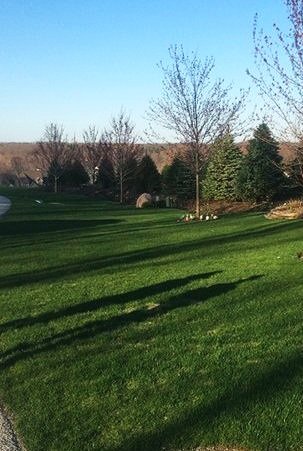If you think mowing is enough to keep your Hudson, OH, Area lawn in great shape, the grass also needs nutrients and other things to perform well. Here is a look at the benefits fertilizer gives to your lawn and a timeline of how often it should be applied to boost the overall health of your grass.
Related: Landscape Care Is About More Than Lawn Mowing. Here's 4 Benefits of Lawn Fertilizer in Novelty, OH
What is fertilizer?
All living things need nutrients, and the grass is no different. Fertilizer delivers the exact nutrients your lawn needs to thrive and withstand the hot summer days. Fertilizers can also prepare your lawn for the freezing winter season.
The three primary nutrients your grass needs are nitrogen, potassium, and phosphorus. Each mineral provides something that is essential for your grass to grow lush and healthy.
Nitrogen is what your grass uses most to build a strong plant. It is usually the first number in the fertilizer as your lawn needs more nitrogen than any other nutrient. Nitrogen ensures your grass plants are developing in a healthy manner and helps the plants form protein that builds cells and tissues.
Potassium helps the plants resist disease and insects. While your lawn care professional will treat the grass for these problems, healthy grass can withstand bugs and disease better than struggling grass. Potassium boosts root growth and helps your lawn remain strong in the heat and cold.
Phosphorus is essential for grass to create its food from photosynthesis. The grass must make and store food to have enough food to thrive throughout the year.
When to Apply Fertilizer
The timing and amount of fertilizer can be a crucial factor in the overall health of the lawn. Lawn care companies recommend several fertilizer applications as a key to keeping your grass thriving.
Early spring fertilizer can help get the grass growing after the cold winter months of dormancy. The nitrogen especially can boost the start of the growing season. Think of early spring fertilizer like a marathon runner preparing the body for a long run—this is what fertilizer can do for your grass.
Summer fertilizer can benefit the grass as the weather gets hot. Repeated warm days can take a toll on your lawn, and fertilizer helps the grass withstand the heat. Once you water the fertilizer so it dissolves in the grass, the roots can absorb the nutrients to remain healthy through the summer season.
Early fall fertilizer can go along with your aeration and overseeding. The fall can be the ideal time to have your lawn aerated and planted with new seed to create a lush stand of grass. Along with the fertilizer, the oxygen, sunshine, and water can cause your existing and new grass to thrive. The warm soil and cooler temperatures can be perfect to prepare your lawn for next spring.
Late fall fertilizer can give your grass plants food to store for the winter months when they cannot make any food. Most of the early fall fertilizer is gone, as it helped the new grass germinate, so additional fertilizer can provide nutrients to store.
Fertilizer can be an essential part of your lawn care plan, but it can be tricky to understand when and how much to apply. The expertise of a lawn care professional can take the guesswork out of feeding your lawn.
Related: Why Lawn Fertilizer Is a Top Recommendation by Landscaping Companies Near Pepper Pike, OH

